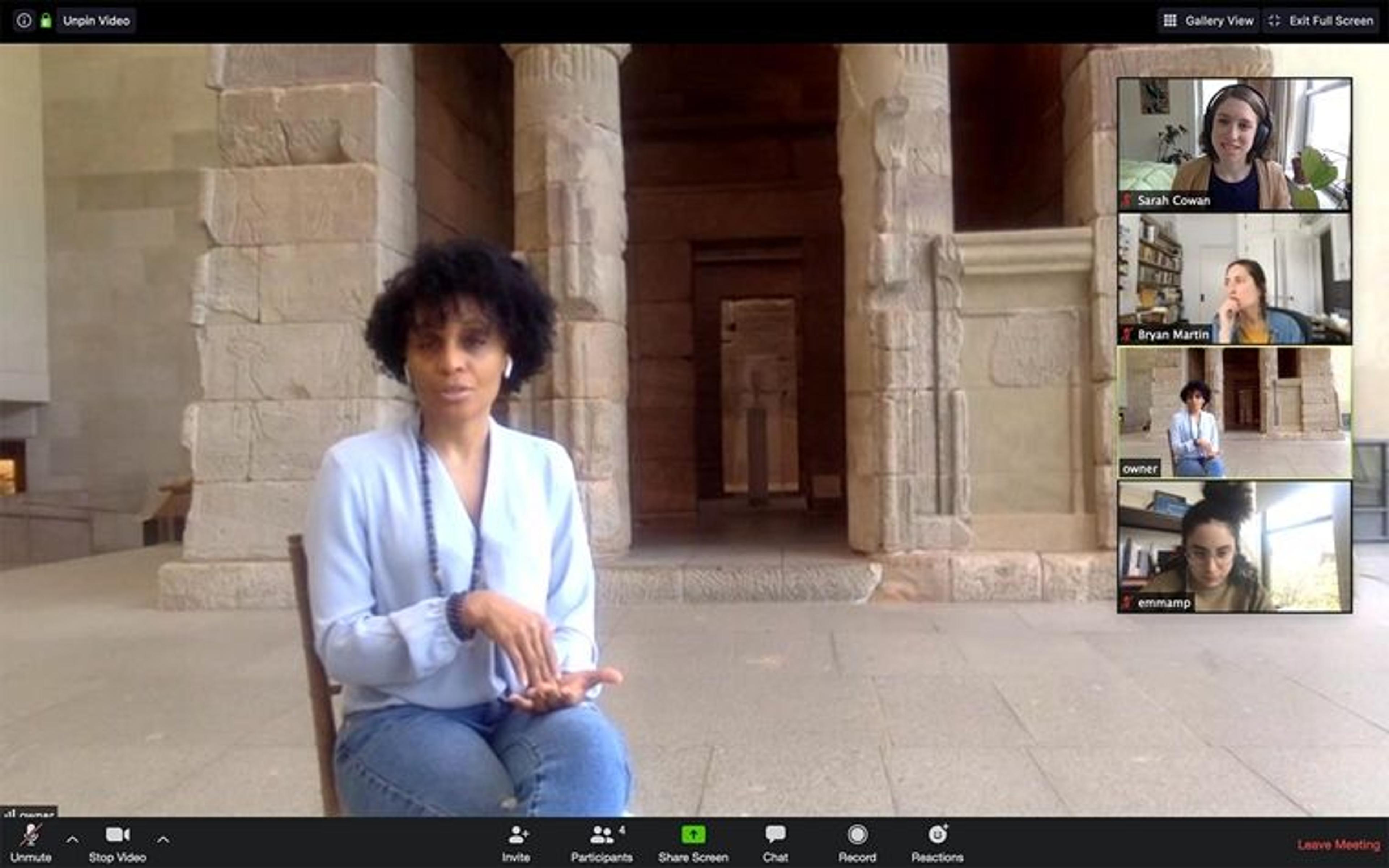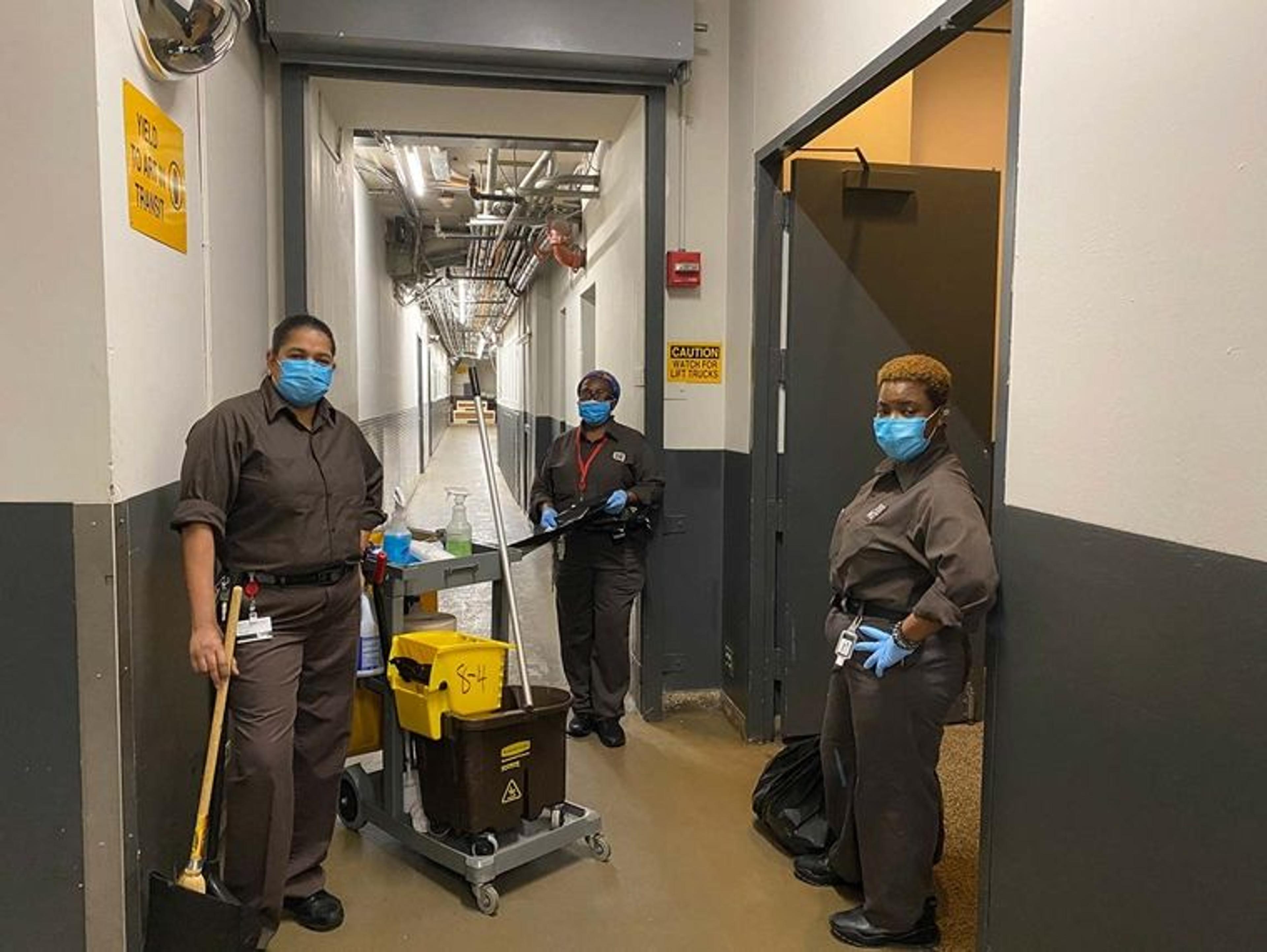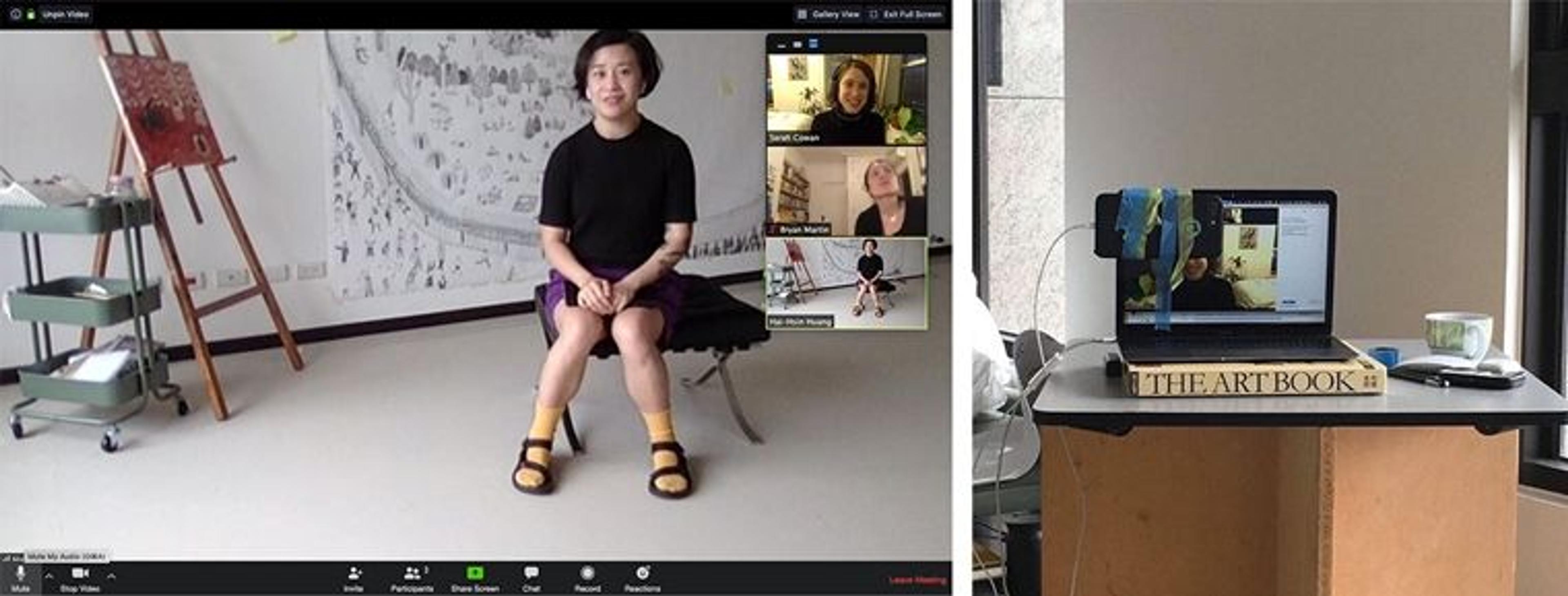When The Met closed its doors in March of this year, it began a new, uncertain chapter in the institution's 150-year history. We invited staff from across the Museum to send us dispatches from wherever they may be, about the innovative ways they were able to adapt, create, and care for the collection and each other as the world was struck by new and dangerous circumstances. This is the first installment of a four-part series.
– The Editorial Team, Digital Department
'An Indelible Crisis': Angela Reynolds, Assistant Building Manager for Maintenance

Angela Reynolds sits for a remote Zoom interview with the Met Stories production team. Image courtesy of Sarah Cowan
When The Met closed its doors as a precaution against the spread of COVID-19, the Museum leadership's message was clear: We care about our visitors and, more importantly, our employees. Meetings with leadership took place to discuss the best course of action to stay ahead of the virus. Assuredly, employees appreciate the steps they took to protect us: not only from the virus, but also for giving most employees the opportunity to maintain their livelihoods with minimal interruption.
The buildings department always knew they were essential, but it was at that moment they became the Museum's masked heroes. Walking with spray bottles and clean rags, the custodial staff disinfected everything from elevator buttons to latches on restroom stalls. You could hear the echo of the custodial carts rolling down the empty hallways to clean occupied departments.
Social distancing and faces half-covered by surgical masks were our new normal. Eye contact became an obligation for effective communication, as staff communicated with their peers by looking them in their eyes. With voices muddled by the masks, there was no more walking away while someone was speaking. We were all connected.

Reyna Paredes, Nellierose Jordan, and Carline Paris, members of The Met's custodial staff, wear face masks as they prepare to disinfect the Museum. Image courtesy of Tish Forde
As COVID-19 disrupted our lives, many Met employees were also struck by the indelible crisis in Black America. Employees began having heart-to-heart conversations about racism and police brutality. The protest against racism became one of the biggest acts of global diversity and inclusion I've ever witnessed.
Black people have never had the power to end racism. We were only capable of fighting against it. I was overcome with deep emotion as I witnessed Black and white people across the world stand in inclusivity to end racism.
The Met's staff is evidence of diversity achieved; however, inclusion is where many of us have missed the mark, often mistaking movement for progress. The Met has a responsibility to create an inclusive environment. This can only happen by our leadership continuing to have conversations with Black employees at every level, because racism strikes each of us differently.
'An Overwhelming Undoing': Sarah Cowan, Producer and Editor, Digital Content

Left: Via Zoom, Sarah Cowan interviews the artist Hai-Hsin Huang from her studio in Taipei, Taiwan. | Right: The remote interview from Hai-Hsin Huang's point of view. Images courtesy of Sarah Cowan and Hai-Hsin Huang
April was supposed to be our busiest month of filming the Met Stories video series, which attempts to describe the Museum in its 150th year by collecting stories from those whose lives the Museum has impacted. When The Met closed, what began as a bizarre inconvenience quickly careened into an overwhelming undoing of every one of our expectations and plans, a confrontation with unthinkable grief, alienation, and vulnerability.
Though it is a year-long celebration of the Museum's anniversary, Met Stories is really about life—joys, breakthroughs, overcoming, falling in love—and the stories are not told only by our subjects, but by candid footage of visitors in the galleries. For that reason, we wanted to record the intensity with which we have all had our lives altered by this year's upheavals. We decided to continue the series remotely. Thanks to our partners on the production, RAVA Films, we found clever ways to continue to film from home. Instead of Steadicams and cinema lenses, we used Zoom, smartphones, masking tape, and Dropbox. All footage of the empty Met was collected from essential staff who filmed with their smartphones during their shifts in the echoing, empty building.
The result of all of this work can be seen in our latest episode, Essential, which you can watch below. In it, Angela Reynolds, Met Assistant Buildings Manager, tells the story of how her recovery from a recent accident relied on the compassion of her staff, the Met's essential workers. During the pandemic they have garnered widespread respect and appreciation, which she has always had for them. Her story is followed by that of Gretchen Rubin, author of The Happiness Project, whose new project to make daily visits to The Met in 2020 was upended. It also includes the story of artist Hai-Hsin Huang, whose drawings of Met visitors look like postcards of a forgotten time. As visitors reenter the galleries, so too will our crews, and we will continue to document the ever-changing life of The Met.
